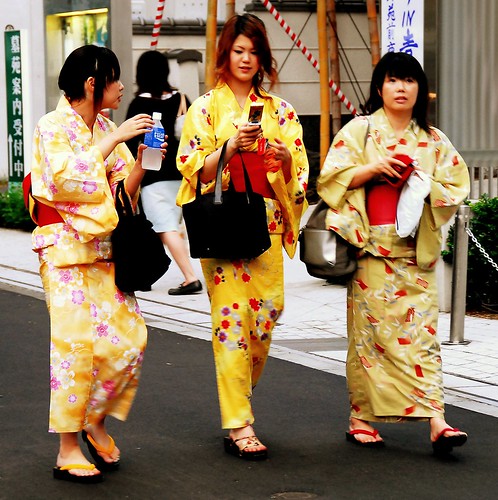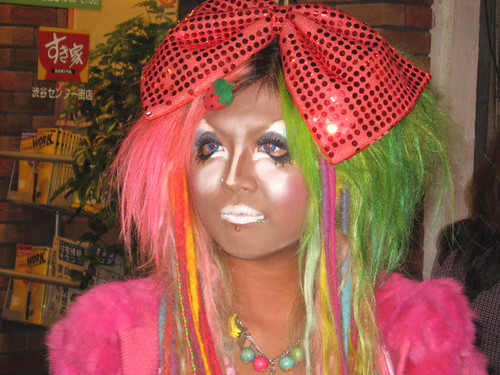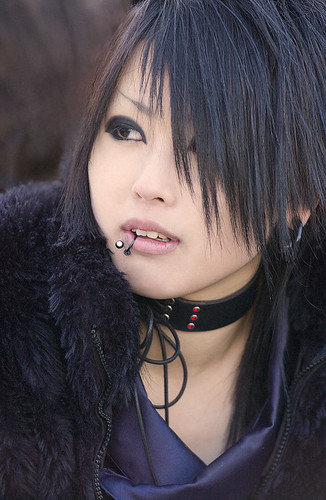Harajuku Station (原宿駅) is a station on the JR Yamanote Line located in Shibuya Tokyo, adjacent to Yoyogi Park. Harajuku Station takes its name from the area on its eastern side, Harajuku.
The Chiyoda Line Meiji-Jingumae Station is immediately adjacent Harajuku Station and is marked as an interchange on most route maps, although there is no physical connection between the two stations.
The station consists of a single island platform. A temporary platform is located on the west side of the station usable by trains travelling towards Shinjuku which is used when major events occur in the area, especially around New Year when many people visit Meiji Shrine.
The bathrooms of Harajuku station also act as mini dressing rooms for the many teenagers who cosplay or wear the outrageous Harajuku fashions for which Harajuku is famous.
The main entrance is at the southern end of the station. A smaller entrance in the centre of the platform is convenient for Takeshita-dori, another famous area in Harajuku. Takeshita-dori is a popular shopping street and Takeshita-dori entrance is often very crowded, creating a bottleneck on weekends when scores of tourists and locals arrive and leave Harajuku generally and the shopping areas in and around Takeshita-dori specifically.
To the north of the station there is a separate platform serving a loop on the east side of the line for use by the Imperial train.
Daily Bike Sexy Babe Girls | Find Auto Parts | Web Design Template | New Nokia Phone























